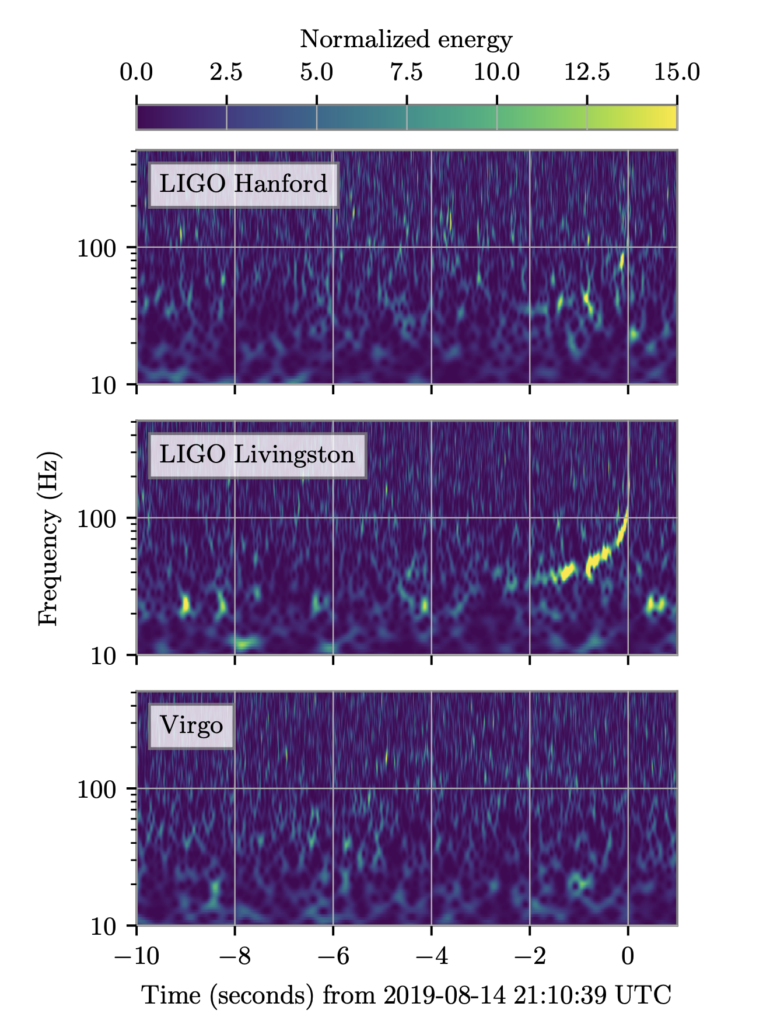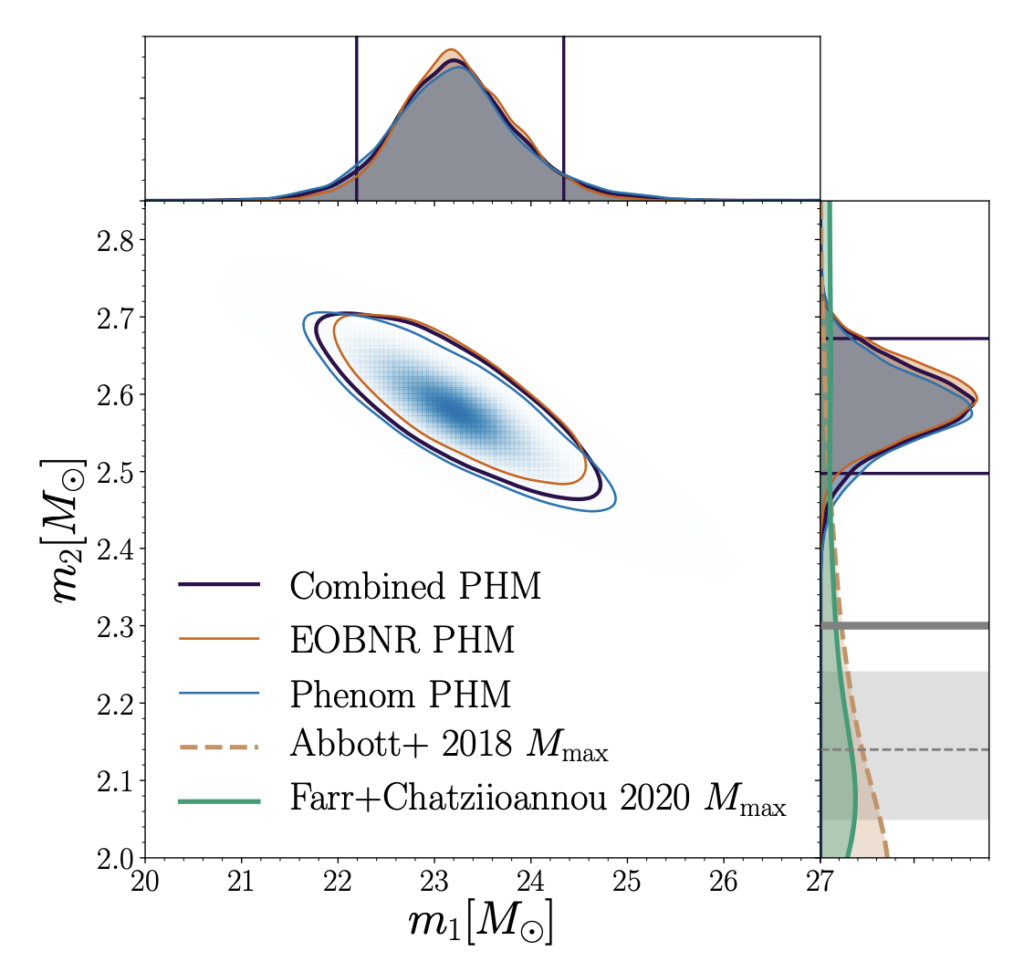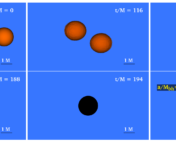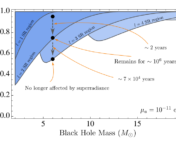Authors: The LIGO Scientific Collaboration, the Virgo Collaboration
Status: Accepted by ApJ Letters, open access on arXiv
Over the last five years the Laser Interferometer Gravitational-Wave Observatory, or LIGO, has been reporting detections of gravitational waves from the mergers of binary black hole and binary neutron star systems. In their third observing run, O3, which ran from April 1 – September 30, 2019, LIGO, in conjunction with VIRGO, have already reported two new and exciting detections: the merger of two black holes with the largest mass differential (GW190412) ever observed and a second binary neutron star merger (GW190425). The focus of today’s paper is on their latest announcement, GW190814 (shown in Figure 1), which may give us new insights into the formation of lopsided binary systems and what matter is like inside of a neutron star.

GW190814 is similar to GW190412 in that the difference in the masses of the merging objects is large. The heavier object is conclusively a black hole with a mass 23 times the mass of the Sun (solar masses, or M☉), and the smaller one is only 2.6 M☉, as shown in Figure 2. However, it is unclear whether the 2.6 M☉ object is a black hole or a neutron star. Either way, it is record-breaking! It is either the least massive black hole, or the most massive neutron star, ever observed in a binary system with another compact object.
Black hole or neutron star?
That is the question. And it’s a very difficult question to answer. One reason that makes this difficult is that no electromagnetic radiation has been associated with this merger. So unlike the kilonova that was associated with GW170817, all we have to work with is the gravitational radiation. We also don’t know of many black holes or neutron stars with masses between 2.5-5 M☉, which is known as the lower mass gap. This makes it difficult to determine if the smaller object is a black hole or a neutron star since there are few examples to compare to.

Another reason this is difficult to solve is that we don’ really know how matter behaves inside of neutron stars. This behavior, known as the neutron star equation of state (EOS), describes how massive a neutron star can be, but it is very hard to pin down. Since one tablespoon of neutron star would weigh more than Mount Everest (that’s about a billions tons!), we cannot make material that dense on Earth. The neutron star EOS is thus constantly revised based on measurements of neutron star masses. The heaviest known neutron star is about 2.14 M☉, lighter than the 2.6 M☉ object in this merging system. By comparing the maximum masses of different predicted neutron star EOS’s, the authors find that it is unlikely, though not impossible, for this smaller object to be a neutron star. But ‘unlikely’ isn’t a conclusive answer, so the authors turn to other methods.
They also try to pin down the nature of this object using what we know about spinning black holes and neutron stars from general relativity. By trying to constrain the spin of the smaller object in the system by studying the gravitational waveform, they can see if a neutron star or black hole is preferred. Unfortunately the results of this study are fairly ambiguous, giving little insight into the nature of the smaller object. So the authors are only able to say that the smaller object in this binary system is probably not a neutron star, but they cannot rule out the possibility.
So what CAN we learn from GW190814?
If it turns out that the smaller object is in fact a neutron star, then we can put new limits on the neutron star EOS, allowing them to be denser and have higher internal pressures than previously thought. There are currently very few models that allow for neutron stars to have masses of 2.6M☉, so this would give new insight into how matter behaves inside of a neutron star.
But even if GW190814 turns out to be a binary black hole merger, it tells us that the lower mass gap may just be waiting to be filled. And this is now the second event reported by LIGO/VIRGO that has a significantly unequal mass ratio, showing that there are many more systems like this than were initially expected. Finding more systems with unequal masses also allows us to study how they might form. The authors are even able to find that GW190814 disfavors formation environments like globular clusters and favors environments more like the centers of galaxies near supermassive black holes.
Will we ever know what this system is?
Maybe, but probably not for a while. As astronomers weight more neutron stars, discover objects in the lower mass gap, and report on more merging systems like this one, we may be able to put tighter constrains on the nature of the smaller object that was part of GW190814. LIGO/VIRGO are likely to find more systems like this one, and future gravitational wave detectors like LISA are expected to find many of these low mass compact object binary systems. So we may have to wait for now, but with new and exciting discoveries continuing to be reported, it may not be too long.




